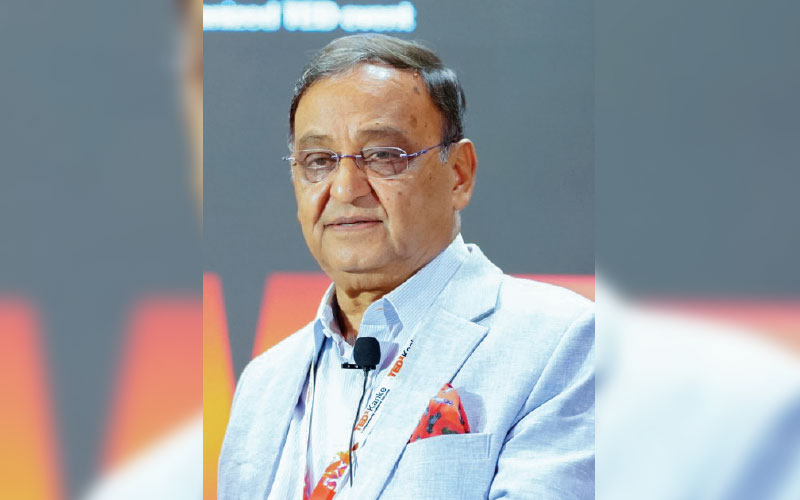Miki Wire Works, a forward- thinking approach company in the steel wire industry, is modernizing its facilities to deliver high-quality products that meet international standards. In an exclusive with Wire & Cable India, Mr. Mahesh Poddar, Chairman of Miki Wire Works, outlines how the company is adopting advanced wire drawing technology, automation, and real-time monitoring to drive efficiency, improve quality, and reduce defects in the steel wire products.

Wire & Cable India: What are the current trends shaping the wire and cable industry in India, especially in the steel wire sector?
Mahesh Poddar: With the adoption of Industry 4.0 technologies like IoT and AI, the steel wire industry in India is evolving, enabling smart factories and improving its efficiency. Government initiatives such as the National Infrastructure Pipeline (NIP) and Smart Cities Mission are driving demand for high-strength steel wires, especially in construction and power transmission.
Moreover, the shift towards renewable energy and electric vehicles is further boosting the need for specialized steel wires. However, high domestic steel prices compared to international benchmarks are hindering growth and leaving production capacities underutilized. Despite this, India’s emerging economy allows the steel wire industry to meet domestic needs while exporting steel wires to markets in the Middle East, Africa, and Europe. At the same time, low-cost imports from countries like China remain a competitive challenge, pushing domestic manufacturers to seek anti-dumping measures.
Watch: Top Cable Companies in India
WCI: How do you see the Budget for FY2025-26 impacting the steel wire and cable industry, and what opportunities do you think it offers for the sector?
MP: The Union Budget for FY2025-26 offers several opportunities and challenges for the steel wire industry in India. The allocation of INR 15.5 lakh crore capital expenditure toward infrastructure projects—such as highways, metro networks, and smart cities—directly boosts demand for steel wires used in construction and power transmission.
Furthermore, the support for MSMEs, including simplified export documentation and cross-border factoring, enhances competitiveness, especially for small and medium steel wire manufacturers targeting global markets.
The budget’s emphasis on sustainable manufacturing, with INR 150 billion incentive for low-carbon steel production, also encourages the adoption of greener technologies in wire manufacturing.
Additionally, reforms to customs duties on capital goods are expected to lower raw material costs, giving an edge to the domestic manufacturers.
WCI: How do you see Indian manufacturers competing with global players in terms of quality, pricing, and technological advancements?
MP: Indian wire manufacturers are increasingly competing with global players by focusing on quality, technology, cost optimization, and sustainability. They produce world-class, high-quality wire products on par with advanced nations, mainly using manufacturing technologies from abroad, as domestic machines still require development to meet international standards.
While the local raw materials have improved over the years, inconsistency in homogeneous properties remains a challenge. High domestic steel price adds to cost pressures, prompting manufacturers to optimize sourcing and invest in energy-efficient processes.
Although Indian wires may not always match the low import prices from countries like China, they stand out for their premium, corrosion-resistant qualities that meet stringent export requirements.

The support for MSMEs, including simplified export documentation and cross-border factoring, enhances competitiveness for the small and medium steel wire manufacturer.
WCI: Fluctuation in raw materials’ price has been a serious challenge for the steel industry and how do you see the industry overcoming these challenges?
MP: Fluctuations in raw material prices are significantly impacting the competitiveness of the steel wire industry in the global market, leading to low utilization of installed capacity. While domestic demand is increasing, the growth pace is not sufficient to fully utilize production capacities.
Strategic sourcing through diversified supplier bases and long-term contracts helps mitigate the risk of price volatility, while backward integration reduces dependency on unstable markets. Futures contracts and commodity hedging are being employed to manage price risks effectively.
Also Read: Mukand Limited Navigating the Stainless Steel Wire Industry Ensuring Growth and Price Stability
WCI: What are the recent developments, innovations and sustainability initiatives adopted by your company?
MP: At Miki Wire Works, we are committed to innovation, quality enhancement, and environmental sustainability. Our recent developments focus on integrating advanced wire drawing technologies to ensure superior tensile strength and corrosion resistance, meeting international quality standards. We continue to upgrade and adopt automation & real-time monitoring systems, to enhance quality control, and minimize defects in our end product.
We strongly believe in protecting the environment during manufacturing and are continuously working to make our processes greener. This involves optimizing energy consumption, reducing waste, and investing in sustainable production techniques.
One milestone we are particularly proud of is adopting acid-free wire drawing through mechanical descaling—a practice we pioneered at Miki Wire Works as early as the 1990s. Today, we produce close to a lakh ton of high-carbon wire every month without pickling, setting an example of how innovation can align with sustainability.
Additionally, we hope to invest in backward integration to secure consistent raw material supply and reduce dependency on external entities.

Although Indian wires may not always match the low import prices, they stand out for their premium, corrosion-resistant qualities that meet stringent export requirements.
WCI: What are your future growth plans or investments aimed at strengthening your market position in the steel wire segment?
MP: At Miki Wire Works, our future growth plans are centered around expanding production capacity, enhancing product quality, and strengthening our export presence to solidify our market position in the steel wire segment.
We continue to modernize our manufacturing facilities by incorporating advanced wire drawing technologies and upgrading automation systems to improve efficiency and product consistency. A key focus area is increasing our SKU portfolio with more specialty-use wire products to cater to diverse industrial applications, including automotive, infrastructure, and power transmission.
On the export front, we aim to increase our footprint in high-demand regions like Europe, the Middle East, and Africa by offering niche, high-quality wire products that meet international standards. Additionally, we plan to invest in R&D to develop innovative wire solutions that cater to emerging market needs, positioning us as a reliable and forward-thinking manufacturer.




